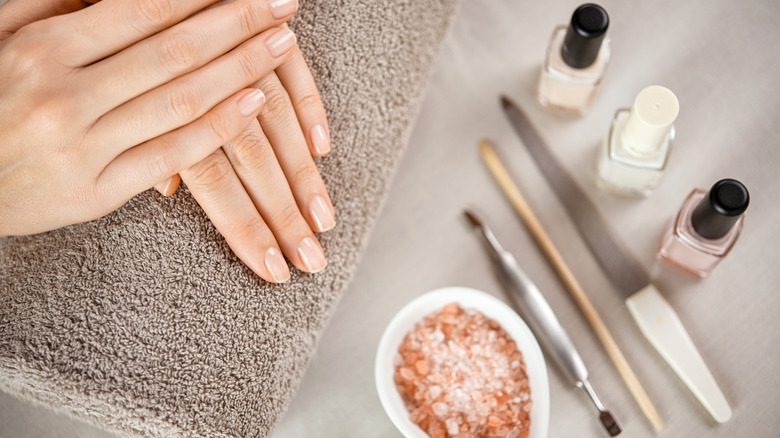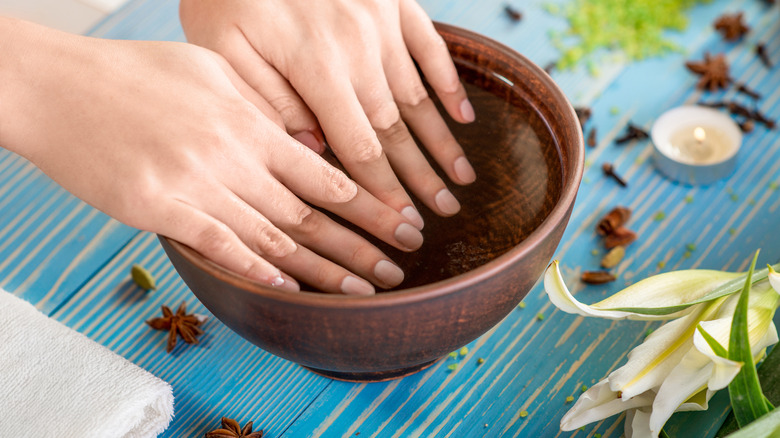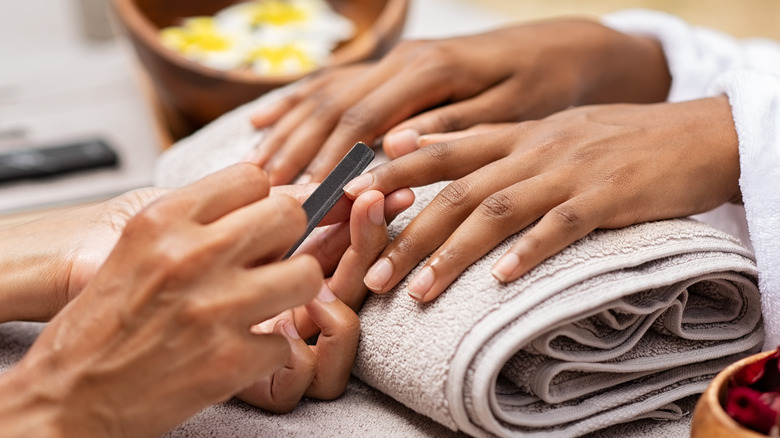Is The Standard Pre-Manicure Nail Soak Really Necessary?
Part of getting a good manicure is having your nails, and nail bed attended to, including cleaning and moisturizing your nails and cuticles. Though the nail color or artificial nail application may be the most exciting part of the process, the prep work must be done before that can happen. While grooming your cuticles and getting your nails filed isn't exactly soothing (though it may be for some), soaking your fingers in a bowl of warm water, followed by your hands and sometimes wrists being massaged, can feel luxurious and quite calming.
However, when on a time limit and trying to grab a quick manicure on a lunch break or before an event, you might feel that the presoak is an unnecessary waste of time. Additionally, a common belief is that the presoak water might not be as sanitary as you might like. However, there is still another reason you might want to skip soaking your nails before a manicure.
What water does to the nails
When nails are placed in water, they quite literally soak it up, and that causes the nails to swell. "When you soak your nails, they absorb water and expand," salon owner Ruth Kallens tells Allure. This can spell disaster for your manicure. Kallens explains that when the polish is applied to water-soaked nails, "the nails would then contract back once they dry, and this can lead to chipping. Not soaking the nails ensures that the manicure lasts longer." Consequently, she has done away with the standard presoak in her salon.
Of course, that begs the question of why we've been soaking our nails all along. "It softens dry cuticles and makes them easier to cut," explains celebrity manicurist Deborah Lippmann. Also, many customers don't want their cuticles cut and prefer to get them pushed back only, and nails that have been soaked in water are easier to push back.
What happens in a waterless manicure
A waterless manicure isn't vastly different from a regular manicure. You skip the soaking section of the manicure, but your nails will be cleaned, filed, and polished as usual. Your cuticles will still be pushed back or cut, depending on your preference. The nail polish will be applied similarly with a base coat, color, and top coat.
The manicurist may end the session by rubbing cuticle oil and hand lotion to protect your nail polish. Applying cuticle oil before the nail polish likely won't be enough time for it to fully soak up, which can lead to an uneven color. Though you skip the water soak, you will still leave with your hands feeling rejuvenated and fresh.
Though you may have always enjoyed the pre-soak, there are certain situations when you might want to try a waterless manicure. If your manicures have not lasted as long as they should or as long as they used to, consider giving them a try. A waterless manicure is also good for anyone who uses their hands a lot, whether working, cleaning, or engaging in any kind of repetitive movement that might affect the nails or simply if you often notice a chip in your color soon after a manicure.


